Afghanistan is that part of India where historical evidence of human settlement (Vedic Aryan culture) has been found 50,000 years ago (Wikipedia).
When Islam emerged in Arbasthan (Arab), after seeing the Islamization of Hindus, Buddhists of Turgasthan (Turkey), King Barmak Buddhist of Iraq, Pahlava Kshatriya of Iran, Buddhist king of Samarkand etc., the turn of Afghanistan part of India. Was. Historian PN Oak writes, "The people of the great Vedic Aryan culture of Eurasia were getting absorbed in the culture of "Violence loot paramodharma:" by chanting the silly garland of "Ahimsa Paramodharma."
The Arab invaders had also occupied Sindh, Multan and some parts of present-day Afghanistan for some time, which in a few years, Raja Bappa Rawal of Raghuvanshi Sisodia dynasty and Gurjara Pratihara heroes, descendants of Sri Ram's Anuj Lakshmana, repulsed the Arabs. was captured. But in the name of religion the infidels were murdered, terrorized, robbed and raped again and again and again and again, the part of India was slowly becoming a victim of Islamic terror.
At the same time, Alaptagin became a Muslim ruler in the Khorasan part of India. He made a Turkish general named Subuktagin. Muslims started attacking the present day Afghanistan and parts of India continuously to make India an Islamic state. The Muslim invaders were able to easily defeat the Buddhists of Bamiyan.
After killing Buddhists in Bamiyan and seizing power, Muslims attacked the Turkish Buddhists of Kabul. The Buddhist king of the Turkish dynasty, Laghman Turk, surrendered and accepted to become a Muslim, and agreed to give 15 lakh dirhams and slaves to Abasid. With that all the Buddhist subjects became Muslims and the Hindus who survived fled towards Gandhara.
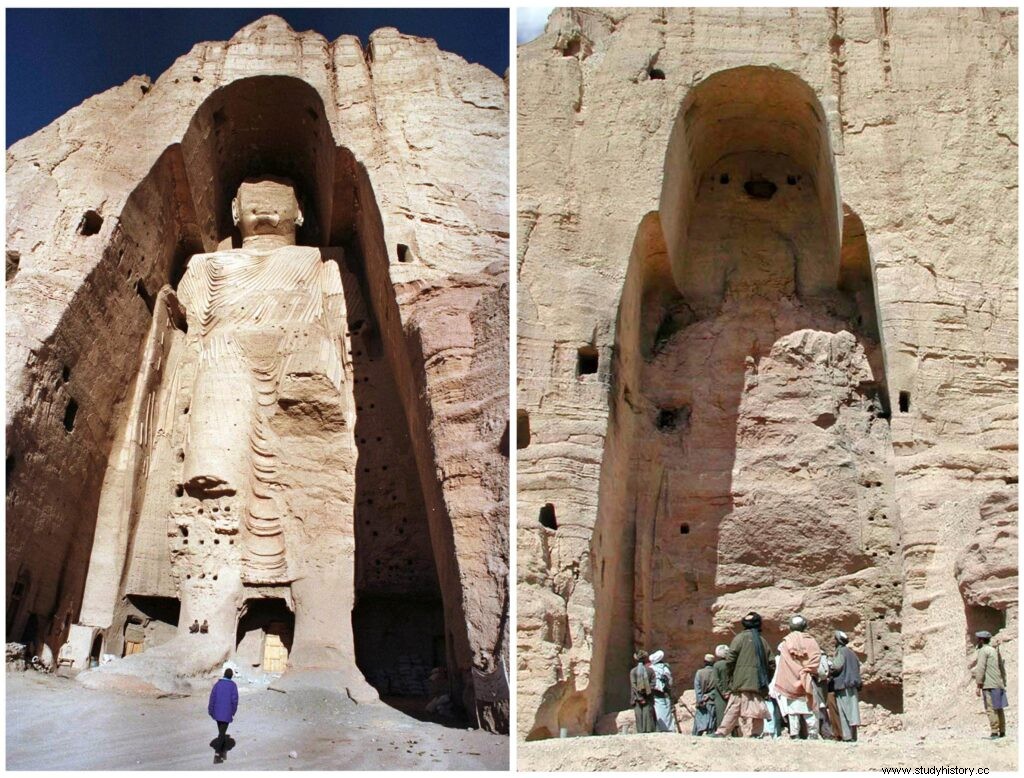
The Kallars (Brahmins) of the Hindushahi dynasty of Gandhara (or Udbhand/Vahind), with the support of the remaining Hindus of Kabul, attacked the Buddhist-Muslim Laghman Turk in 850 AD and captured Kabul. Muslims would attack like thieves and robbers, plundering villages and cities, demolishing temples, abducting helpless citizens, raping women and burning crops.
According to the Mazare Sharif inscription, discovered by the Taxila Institute of Asian Civilizations, Islamabad, the royal ruler Vekkadeva conquered northern Afghanistan and ruled there and built a huge Shiva temple there. He had issued copper coins with elephant and lion.

Ashta and Toorman of the Hindushahi dynasty took control of Ghazni and ruled there. After that probably Lavik of Hindushahi dynasty ruled over Ghazni which was supported by Hindushahi dynasty. Ashta wanted to replace Kamalvarman, the ruler of Udbhandpur of the Hindushahi dynasty, and become the ruler himself, but Rajatarangini reveals that the kingdom of Kashmir stopped him from doing so.
After a few years, the Islamic invader Alpatgin took control of Ghazni. Then Lavik was sent for recapture with a large army and he succeeded. But Ghazni did not remain under the control of the Hindus for a long time. Alaptagin's general Subuktagin took control of Ghazni and completely Islamized Ghazni, the place of power for Hindus.
Kamalvarman's Bhimdev became the ruler of the Hindushahi dynasty. He did not have sons, only one daughter, Didda, who later became the famous empress of Kashmir. The royal kingdom was prosperous and strong but was not secure because of the Muslims. In the absence of a male successor, he made Jaipaldev his successor, who was probably from the Kshatriya clan.
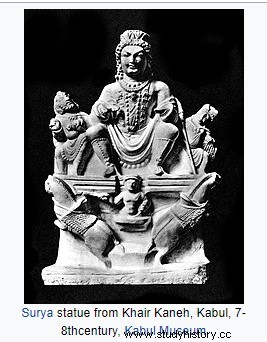
King Jaipal of the Hindushahi dynasty of Gandhara fought hard with the Muslims and got rid of their sixes. One day a delegation of Subuktagin reached Jaipal's Lahore court and asked Jaipal for war compensation, threatening to kill the Hindu and Buddhist civilians in his captivity, then Jaipal took those wicked captives. Then there was a terrible war and in this war Peshawar (Pushkal or Purushpur) passed out from the hands of Jaipal. Taking Peshawar hostage at the hands of the soldiers, he returned to Balkh. But then there was no shortage of heroes among Hindus. It is said that a brave warrior Jasraj killed Muhammad Ghazni's father Subuktagin in his own court and hanged his head in Multan.
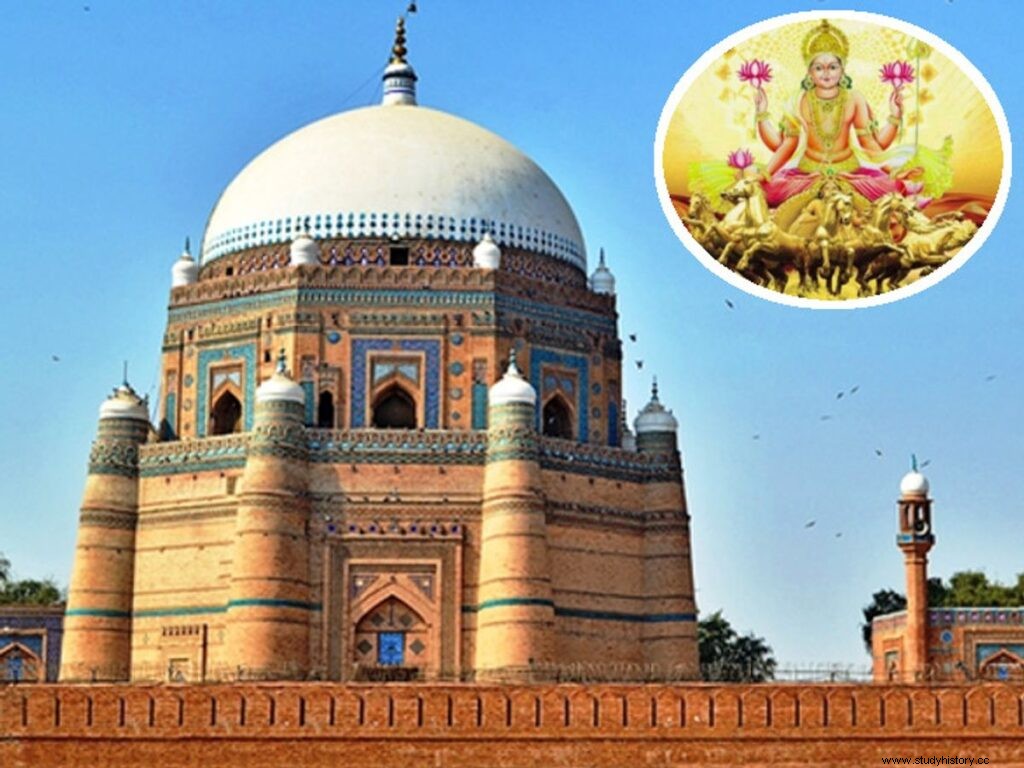
The demonic Ghaznavi was so enraged by this that he announced every year to do jihad against India. His face was so terrible that once he was scared to see his own face in the mirror. Since then he had stopped looking in the mirror. Like robbers, he would attack the rich regions of India and big temples. He would have looted the state and made him a crematorium, killed men, made women sex slaves and sold them in Ghazni markets for two rupees and made children slaves or Muslims and joined his demonic army. He would have robbed the treasury of the temples, then destroyed the temple or made it a mosque.
Dr. Edward Sachu writes, “For Mahmud all Hindus are kafirs. They all deserve to be sent to hell because they refuse to be looted. He was so cruel that in order to avoid being crushed to death by the feet of an elephant, even Firdausi had to flee in disguise with his own life.”
Professor Habib writes, “Mahmud's views about Sheikh Saadi and his Gulistan were very low. Most of the stories about the greatness of Sultan Mahmud were fabricated during the semi-Turkish reign of Delhi and Daulatabad."
Influenced by the continuous invasion of Muslims, Jaipal of the Hindushahi dynasty, who had defeated the Muslims till Ghazni, now started ruling from Lohan Kot (Lahore fort). But in November 1001 AD, there was a battle between Ghaznavi and Jaipal at Pushkalavati, in which fifteen Kshatriya princes were deceived by Ghaznavi, due to which Jaipal probably had to accept defeat because later the princes were released.
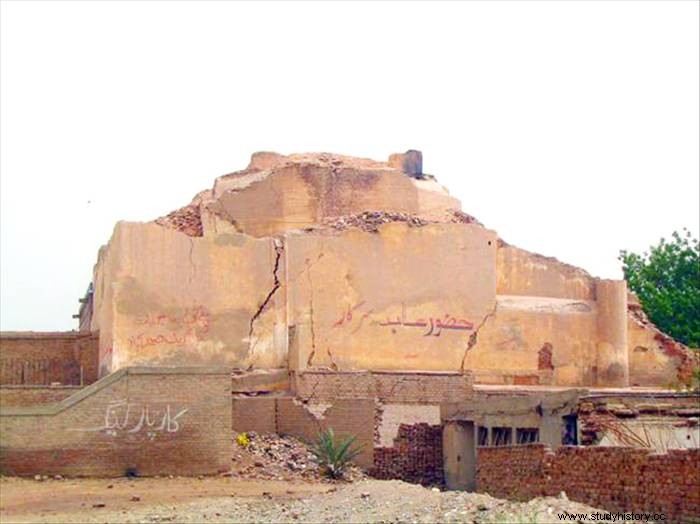
After the defeat against Mohammad Ghaznavi, Jaipal committed suicide by entering the fire after being hurt by the heinous misdeeds of genocide and rape by the Muslims. After the death of Jaipal, the present Afghanistan of India, which was ruled by Buddhists and Hindus, was almost completely Islamized.
After Raja Jaipal, son Anangpal fought a terrible struggle with Mohammad Ghaznavi. Ghaznavi took Anandpal's son Sukhdev captive and made him the ruler of Bheda when he became a Muslim. But he hated Islamic devils. Revolted as soon as he became the ruler of Bheda and attained martyrdom while fighting Ghaznavi's army.
Anangpal continued the struggle. He hated Mahmud because the demon had brutally chewed on his father, son and subjects. The armies of Delhi, Ajmer, Kannauj, Kalinjar, Ujjain, Gwalior also participated in his struggle with Mahmud in 1008 AD.
Professor Habib writes that, "In this hour of collective crisis, Hindu women sold their jewelery and sent sales money from far and wide. The poor sisters of the country contributed to the security of the country by running charkha and working as laborers even in fever.”
Anandpal advanced towards Vahind with a huge army. Seeing the numbers of the army, Mahmud could not dare to come forward. He dug a ditch around his stop. He waited for 40 days. Here Anandpal's army kept increasing, Hindus were coming and meeting his army with weapons.
Terrified by this expansion of the Hindu army, Mahmud had to enter the battlefield. Bare-headed and barefoot, thousands of brave gakkhars pierced the sky with the echo of the sound of Samar and funded the trenches, crossed the tents and broke down on the Muslim army. The combined army rescued the sixes of Ghazni's forces. Muslim soldiers were being cut like carrots and radishes. Ghaznavi's army began to retreat rapidly, it seemed certain that its defeat was certain, then misfortune played the game and the dice turned.
A gunpowder was hit on one of the temples of Anangpal's elephant and the elephant started running backwards with Anangpal. The generals of other kings felt that Anangpal was running away from the war, so they also started running. Reaching the gates of victory, the combined army was foolishly defeated and later Anangpal had to make a humiliating treaty.
Historian Purushottam Nagesh Oak writes, “This was the last united Hindu protest. There was a mass gathering with great enthusiasm. But due to a small mistake, mass exodus happened very comfortably. The Hindu army was defeated while winning. This victory would have been a great glorious victory that probably would have wiped out these wicked ones from the root."
The Surya Mandir of Multan and the Chakrapani Temple of Sthaneshwar were huge and international pilgrimage sites like the temples of Kashi and Somnath, which Muhammad destroyed and plundered. Pleased with his cruel and diabolical act, the Caliph honored him with titles and appointed him the ruler. Here Anangpal, hurt by the humiliation of the treaty and the devastation of the Dev temples at the hands of the devils, died within a few days.

A few days after Anandpal, Trilochanpal then his son Bhimpal became the ruler. He broke all humiliating treaties with Mahmud. He challenged Mahmud and stopped sending taxes. Committed to regain the lost prestige of his royal family and to wash away the stigma on the honor of his country with his blood.
Mahmud attacked in 1014 AD to crush this proud Hindu infant ruler of Lahore. To confront Ghaznavi, Bhimpal chose the Margala valley, which was strategically best. Influenced by the strong leadership of Bhimpal, some Hindu kings also sent their troops. A fierce battle ensued but Bhimpal's army was defeated and then the Islamic orgy of massacre of Hindus, rape of women, destruction of temples, plundering, conversion etc. started. After that he attacked Lahore fort but he could not take possession and from there he had to return to Ghazni after defeating him.
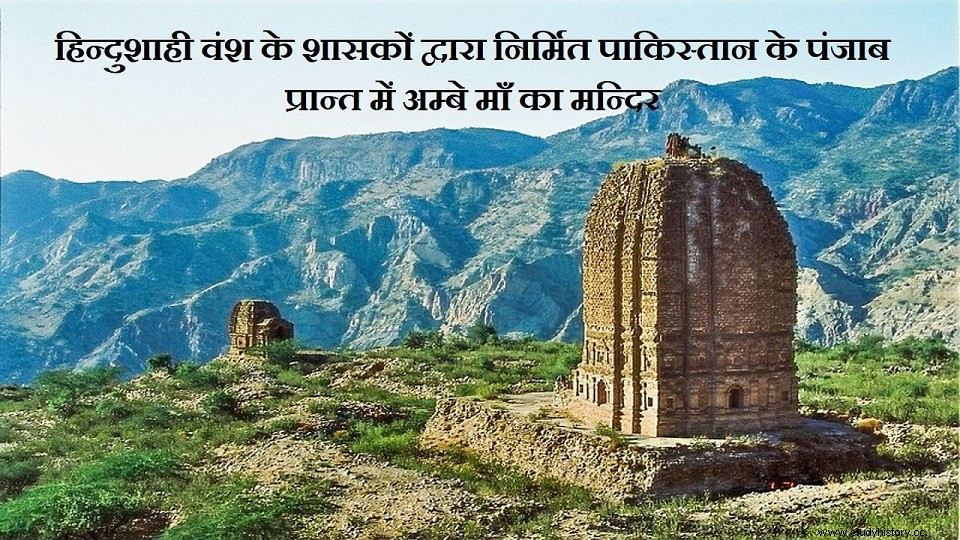
The humiliation of defeat in Lohakot began to bite Ghaznavi. He tried once again to avenge this insult, but this time also he had to face it. But he became victorious in the battle of Ramganga and got the right over Lohakot. Trilochanpal died after this war and Bhimpal went to the Rai of Ajmer. Thus the Hindushahi dynasty established by the Kallur Brahmins ended fighting Islamic terrorists for the defense of India and Indians.
